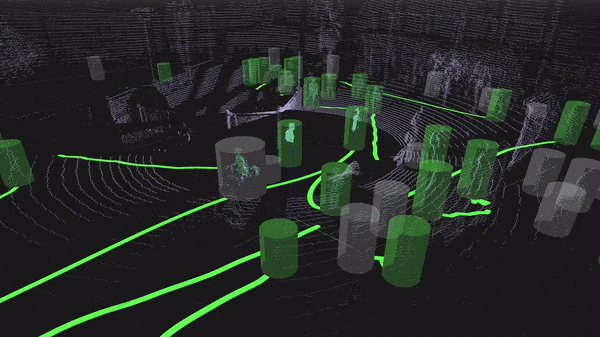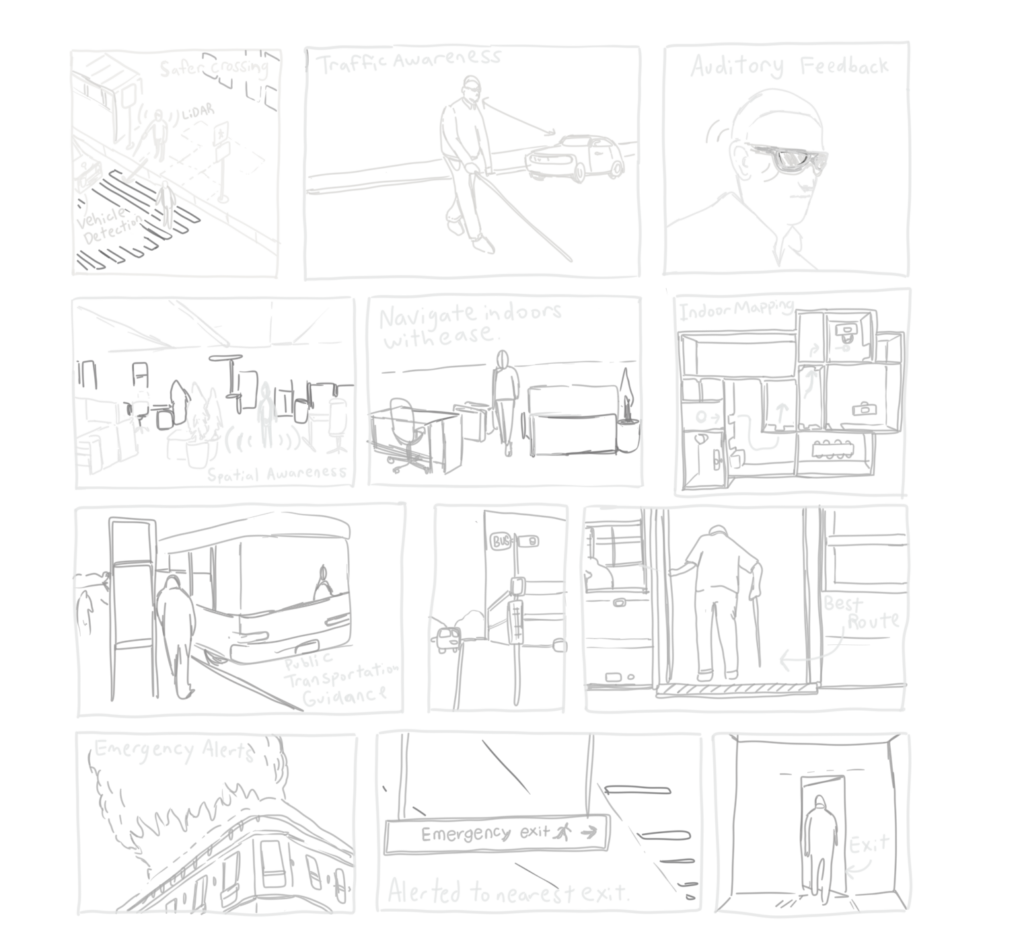ECHO LENS
Explore a new path.
In this project, I conceptualized the Echo Lens, an innovative LiDAR eyewear device tailored for the visually impaired, aiming to revolutionize their navigation experiences. This cutting-edge product combines LiDAR technology with AI algorithms to create a dynamic, 3D spatial map of the user's environment, both indoors and outdoors.
The Echo Lens not only detects obstacles but also provides auditory cues through an integrated earpiece, enhancing safety and mobility for its users. This project involved meticulous user research, iterative design testing, and close collaboration with visually impaired users to ensure the product met their real-world needs. The Echo Lens stands as a testament to the potential of technology to transform lives and embodies my commitment to creating inclusive, empathetic, and user-centric design solutions.
2.2 billion people have a vision impairment or blindness, according to the World Health Organization.
General Statistics on Visual Impairment Prevalence: Globally, at least 2.2 billion people have a vision impairment or blindness, according to the World Health Organization. Causes: The major causes of vision impairment are uncorrected refractive errors and cataracts. Age Factor: The prevalence of vision impairment increases with age. Geographical Variation: The prevalence of vision impairment varies by geographic location and socioeconomic status. Impact of Visual Impairment on Daily Life Increased Risk of Falls and Injuries: Visually impaired individuals have a higher risk of falls. According to some studies, the fall injury rate is double for those with vision loss compared to those without. Navigation Challenges: Difficulty in navigating unfamiliar environments, leading to potential injuries or accidents. Dependence on Assistive Tools: Increased dependence on tools like canes, guide dogs, and digital assistance devices for mobility and everyday tasks.
The Echo Lens aids blind individuals by using advanced LiDAR technology to map out their routes.

Pain Points:
Navigation and Mobility
- Obstacle Avoidance: Difficulty detecting overhead obstacles, uneven surfaces, or small objects on the ground that traditional canes or guide dogs might miss.
- Indoor Navigation: Challenges in navigating indoor spaces like offices or malls, where GPS is less effective and environments can be complex
- Crowded Areas: Increased difficulty and anxiety when moving through crowded, busy areas due to the unpredictability of people’s movements.
Technology Integration
- Usability of Device: Concerns about the ease of use, especially for those who are not tech-savvy or have additional disabilities besides visual impairment.
- Comfort and Design: Discomfort or inconvenience caused by the physical design of the device, such as weight, fit around the head, or aesthetics.
- Battery Life and Maintenance: Worries about the device running out of power when needed most and the hassle of regular charging or maintenance.
Safety and Independence
- Reliability of Feedback: Dependence on the accuracy and timeliness of auditory feedback to avoid hazards, with any delay or error potentially leading to accidents.
- Overreliance on Technology: Concerns about becoming too reliant on the device, potentially diminishing other navigational skills.
- Privacy and Social Perception: Anxiety about how using such a device might affect personal privacy or how others perceive them in public.
Cost and Accessibility
- Affordability: The high cost of advanced technology making the device inaccessible to many in the visually impaired community.
- Availability and Support: Challenges in accessing the device, including distribution limitations and lack of technical support or training
- Adaptability Across Environments: The device’s effectiveness in different environmental conditions, such as rain, bright sunlight, or noisy areas.
Storyboard Vision
I created the storyboard for Echo Lens to visually illustrate the diverse, real-world applications of this innovative device, demonstrating its potential to significantly enhance the daily lives of visually impaired individuals.

Research Resources
SPAR 3D – LiDAR Section: https://www.spar3d.com/tag/lidar/
SICK Sensor Blog – LiDAR Technology: https://sickusablog.com/lidar-technology-101/
Sensing and Imaging – LiDAR: https://www.mdpi.com/journal/sensors/special_issues/LiDAR
Geospatial World – LiDAR: https://www.geospatialworld.net/tag/lidar/
National Federation of the Blind (NFB): https://nfb.org/
American Foundation for the Blind (AFB): https://www.afb.org/
World Health Organization (WHO) – Blindness and Vision Impairment: https://www.who.int/health-topics/blindness-and-vision-loss
Lighthouse Guild: https://www.lighthouseguild.org/
